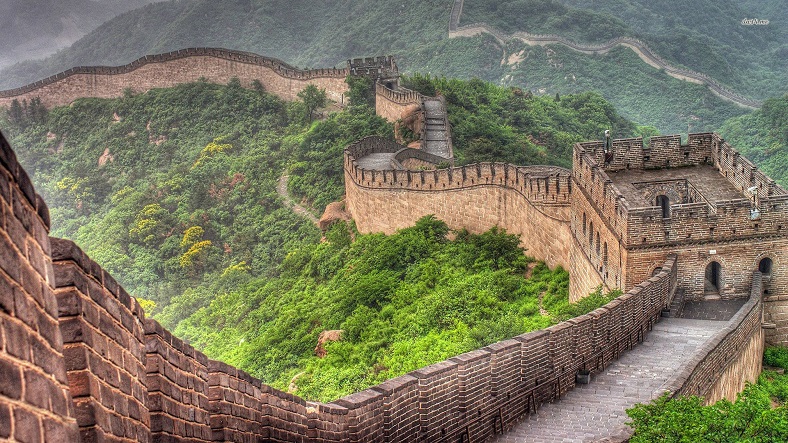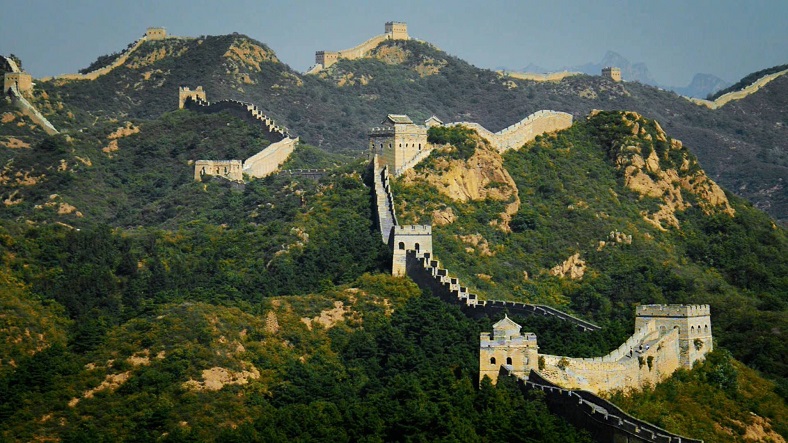Everyone knows that The Great Wall of China is the longest wall and biggest ancient architecture in the world. Its zigzag path over the country with steep mountains makes it a unique structure. Moreover, it has an amazing arrangement of scenery from the beaches of Qinhuangdao, to Rocky Mountains around Beijing, to a desert corridor between huge mountain ranges.
Derivation of its name:
- Chinese name: 长城 (Chángchéng /channg-chnng/ ‘Long Wall’)
- Other name: 万里长城 (Wàn-Lǐ Chángchéng /wann-lee channg-chnng/ ‘Ten-Thousand-Li-Long Wall’, i.e. ‘the 5,000-Kilometer-Long Wall’)
Here are 20 Great Wall of China Facts you should know to really appreciate the art of China…
10 Great Wall Numbers You Should Know
- The actual length of the Great Wall of China is 21,196.18 km(13,170.7 mi)
- Most of today’s artifacts are the Ming Dynasty Great Wall which is 8,851 km (5,500 mi) long.
- Also, this wall is over 2,300 years old.
- The Ming Great Wall travels across 9 provinces and municipalities, namely –
- Liaoning, Hebei, Tianjin, Beijing, Inner Mongolia, Shanxi, Shaanxi, and Ningxia, Gansu.
- Badaling is the most visited part and in the first week of May and October, the visits can be up to 70,000 per day.
Did you know? 63,000,000 visitors visited the Great Wall in 2001.
- The average height of Wall at Badaling and Juyong Pass is 7.88 meters, and the highest place is 14 meters high.
- Surprisingly, nearly 1/3 of the Great Wall has disappeared without trace.
- Since the displacement of the Ming Dynasty in 1644, no further work has been done on the Great Wall (for military purposes — some has been restored for tourism).
- In 1957, Great Wall reconstruction and protection began with Badaling.
- In December 1987, UNESCO stated the Great Wall on the World Heritage List.
Know more on GREAT WALL OF CHINA:
10 More Interesting Great Wall of China Facts
- The Great Wall of China is built as the only man-made object visible from space. However, it generally isn’t visible due to the unaided eye in low Earth orbit.
- The Great Wall is not a continuous line: there are side walls, circular walls, parallel walls, and parts with no wall.
Did you know? In the Qin Dynasty (221–206 BC), glutinous rice flour was used to attach the Great Wall bricks.
- The Great Wall labor had soldiers, forcibly-recruited peasants, convicts, and POWs.
- The First Emperor of Qin was not the first to construct the Great Wall. Also, he connected the northern walls of the states he conquered.
- The most popular Great Wall legend is Meng Jiangnv, whose husband died while building the Wall. She wept so loudly that a part of the Wall collapsed which revealed her husband’s bones and she buried them.
- The Gubeikou Section has bullet holes in it which is an evidence of the last battle fought at the Great Wall.
- During the Cultural Revolution in 1966–1976, the wall bricks were used in building homes, farms, or reservoirs.
- Moreover, The Great Wall sections northwest are likely to vanish in 20 years, due to desertification and change in human land use.
- The Jiankou Section of the Great Wall enjoys the most appearances on Great Wall picture books and post cards.
- The most famous part of the Wall— Badaling — has been visited by over 300 heads of state and VIPs from around the world.








Leave a Reply
You must be logged in to post a comment.